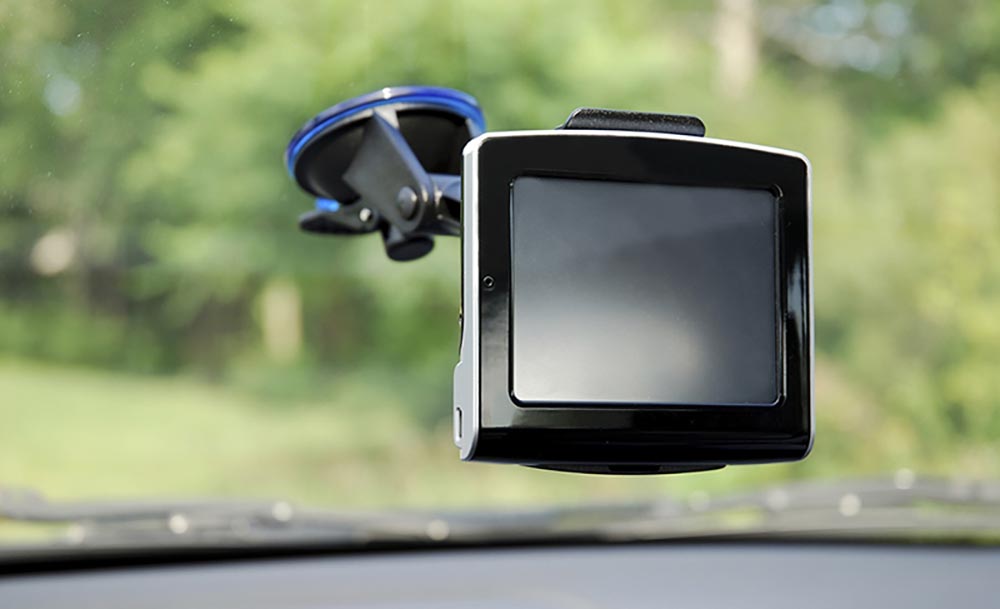Mount your sat nav safely

Before heading out on the road, take the time to correctly position your satellite navigation systems. A poorly positioned sat nav can cause major distractions and impact the driver’s view of the road. To determine the correct placement of your sat nav, consider the following:
View and range of vision
A sat nav in the centre of the windscreen can potentially block the view of the road and upcoming hazards. Positioning your sat nav at the top of the windscreen is also not ideal as looking up could be distracting.
Hema Maps Retail Product Manager Ian Glyde said motorists need to find the correct mount and fit for their individual vehicles.
“Mount your sat nav according to governing regulations ensuring it can be easily seen but not obstructing the drivers view of the road or the vehicle controls,” Mr Glyde said.
“People need to find the best fit for them, their vehicle, and their individual driving style while taking into account safety factors including being able to view the road correctly."
Arguably, one of the best positions is the bottom right hand corner of the windscreen. Placed here, the sat nav won’t obstruct your view of the road and is in a place where you can naturally scan (as you look to your right hand rear view mirror).
The power cord
It is important the power cord does not cross your line of vision or have the potential to get caught in the steering wheel, gear shift or any dash instruments. It should also be clear from the accelerator and brake pad.
If placing your sat nav in the lower right-hand side of the windshield, make sure the cord is secured along the top of the dash and down the side of the control panel. Use tape to keep it in place.
Accidents and collisions
Think about what would happen to your sat nav if you were in a collision. Ideally, the device should be placed where it won’t cause any harm to the driver or passenger. Make sure it’s secured to the windshield or dash – you wouldn’t want it to become a dangerous projectile in an accident.
The most important safety consideration is to avoid touching it while on the road. Make sure you only plug in details or make updates when you’re parked and out of harm’s way.
Related topics
Things to note
The information in this article has been prepared for general information purposes only and is not intended as legal advice or specific advice to any particular person. Any advice contained in the document is general advice, not intended as legal advice or professional advice and does not take into account any person’s particular circumstances. Before acting on anything based on this advice you should consider its appropriateness to you, having regard to your objectives and needs.
Insurance Products (excluding Travel Insurance) are issued by RACQ Insurance Limited ABN 50 009 704 152 (RACQI) and arranged by its agent, RACQ Distribution Services Pty Ltd (RDS) ABN 35 116 361 650, AFSL 567130 and RDS' authorised representatives (including RACQ Operations Pty Ltd ABN 80 009 663 414, AR No. 234978 (RACQO). Conditions, limits and exclusions apply. RDS and RACQO are in the RACQ group of companies. One of the companies in the RACQ group of companies has a minority shareholding in RACQI.
RDS and RACQO have not taken your personal objectives, circumstances or needs into account when preparing advice regarding insurance products and you will need to consider whether the advice is appropriate for you. Read the Product Disclosure Statement (PDS) and any applicable Supplementary PDS before making a purchase decision on this product. You can also access our Target Market Determinations on this website. RDS receives a commission from RACQI for the policies it arranges. RACQO receives fees paid for services it provides to RDS. Further details about remuneration are available on request prior to purchasing.
Banking and loan products issued by Members Banking Group Limited ABN 83 087 651 054 AFSL/Australian credit licence 241195 trading as RACQ Bank. Terms, conditions, fees, charges and lending policies apply. This is general advice only and may not be right for you. This information does not take your personal objectives, circumstances or needs into account. Read the disclosure documents for your selected product or service, including the Financial Services Guide and the Terms and Conditions, and consider if appropriate for you before deciding.
Except for RACQ Bank, any RACQ entity referred to on this page is not an authorised deposit-taking institution for the purposes of the Banking Act 1959 (Cth). That entity’s obligations do not represent deposits or other liabilities of RACQ Bank. RACQ Bank does not guarantee or otherwise provide assurance in respect of the obligations of that entity, unless noted otherwise.
RACQ Bank subscribes to the Customer Owned Banking Code of Practice which establishes higher standards than the law requires. The Code reflects modern consumer expectations and developments in approaches to issues such as consumer vulnerability, guarantors, and supporting customers through financial hardship. Please read our Customer Owned Banking Code of Practice page for more information.
RACQ Operations Pty Ltd (ABN 80 009 663 414 AR 000234978) and Members Travel Group Pty Ltd (ABN 45 144 538 803 AR 000432492) are acting as an Authorised Representative of the issuer of the insurance, Tokio Marine & Nichido Fire Insurance Co., Ltd. (ABN 80 000 438 291 AFSL 246 548). Any advice set out above is general in nature only, and does not take into account your objectives, financial situation or needs. Before purchasing any travel products, please consider the RACQ Travel Insurance Product Disclosure Statement (PDS) and the Target Market Determinations (TMDs) that apply to these products. Whilst the PDS outlines the Terms and Conditions of these products, the TMDs outline the intended class of customers that comprise the target market for these travel products. This will allow you to consider which products best suit your objectives, financial situation and needs and consider the products appropriateness to your personal circumstances. TMDs also outline matters involving the distribution and the review of these products. The PDS, Supplementary PDS and TMDs for each travel product can be found here.
